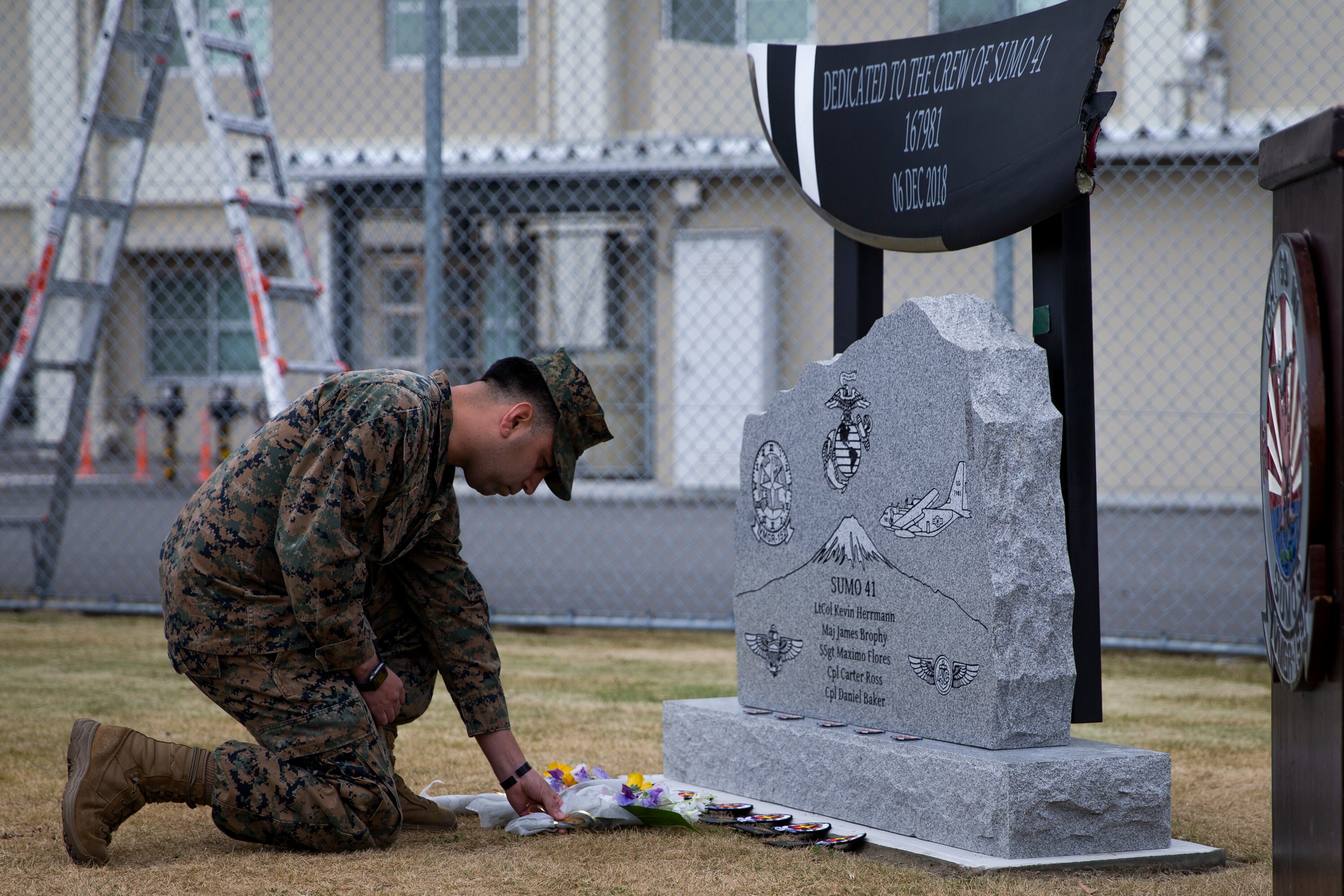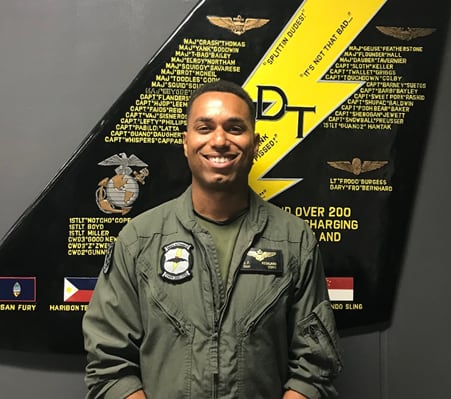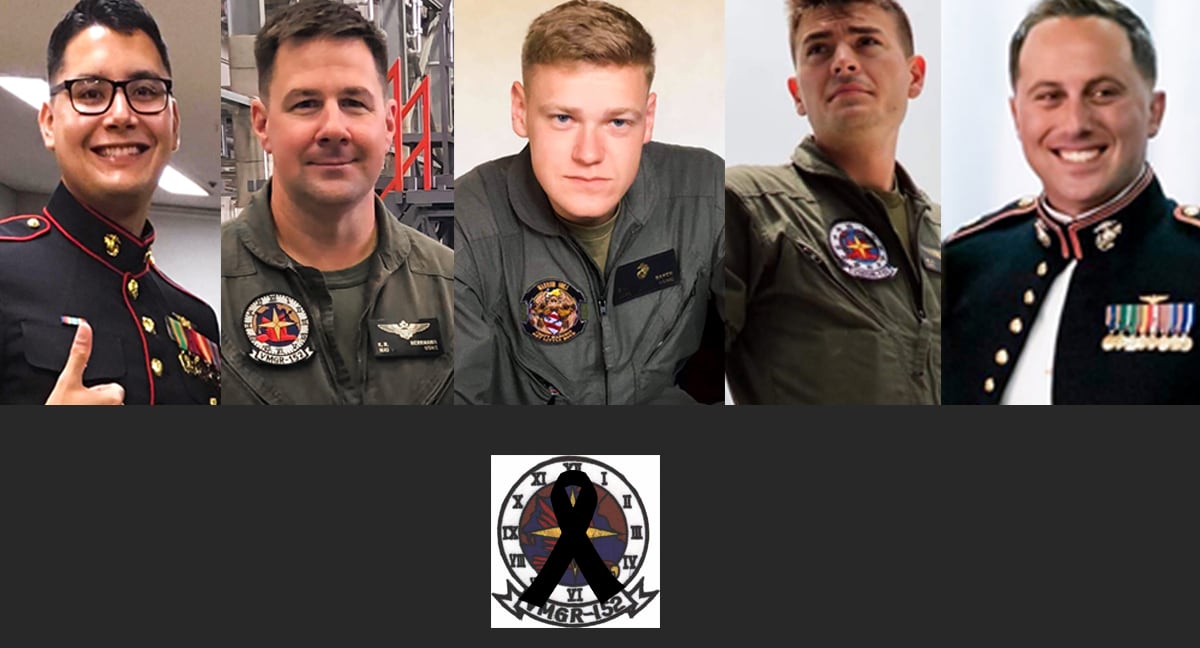The deaths of six Marines in a midair collision off the coast of Japan in December 2018 has spurred changes in Marine aviation, including shifts in tracking training, increasing manpower and improving maintenance as well as fielding a commercial beacon as a temporary fix for finding downed aviators at sea.
But even the top Marine aviator admitted to Congress that those moves fall short of fixing problems that led to Marine deaths.
And more may be revealed when an additional investigation concludes in the coming months.
“We’ve still got a lot of work to do,” Lt. Gen. Steven Rudder, deputy commandant for Marine aviation, told House Armed Services subcommittees in a hearing Wednesday devoted solely to Navy and Marine Corps Pacific readiness in the wake of ship and aircraft mishaps that have claimed the lives of 23 U.S. service members since 2017.
RELATED

“We cannot change what happened, what we can do is use this tragedy to grow and change our organization,” Rudder said.
In Dec. 6, 2018, off the coast of Japan over the Philippine Sea, two F/A-18 jets assigned to Marine All-Weather Attack Squadron 242 were conducting an unscheduled night air-to-air refueling with a KC-130J with Marine Aerial Refueler Transport Squadron 152, both based in Iwakuni, Japan.
As the refueling concluded, one of the F/A-18 jets collided with the transport plane during a nonstandard maneuver when detaching from the aircraft, an investigation into the incident found.
The KC-130J crashed, killing all on board. The pilot and weapons officer of the F/A-18 ejected from their jet and initially survived the crash.
The weapons officer, who was not identified in reports, was recovered within four hours and survived.
But jet pilot Capt. Jahmar Resilard, 28, would not be pulled from the water for nearly 10 hours after the crash. Resilard had sustained injuries in the crash and was unable to pull himself into a life raft, officials said. His locator beacon was malfunctioning and the ejection had stripped his helmet of the reflective tape that would have helped rescuers in their search.
The KC-130J crew did not survive the crash, which included Lt. Col. Kevin R. Herrmann, 38, Maj. James M. Brophy, 36, Staff Sgt. Maximo Alexander Flores, 27, Cpl. William C. Ross, 21, and Cpl. Daniel E. Baker, 21.

Rudder told lawmakers that a Consolidated Disposition Authority appointed by Assistant Commandant Gen. Gary L. Thomas in September, is reviewing the initial investigation and other findings.
That confidential report is likely to conclude in the next two to three months, he said.
Rep. Mike Gallagher, R-Wisconsin, told the general that he understood the confidential method for the report to allow for candor, “but I wonder if we shouldn’t consider publishing a lot of it?"
An initial command investigation resulted in the firing of Lt. Col. James R. Compton, the F/A-18 squadron commander, along with the unit’s executive officer, operations officer and aviation safety officer.
A second safety investigation, reported on extensively by ProPublica.org, pointed to senior commanders who ignored requests for more resources and time to train along with faulty equipment, such as ejection seat locator beacons that did not work when submerged in water.
Rep. Austin Scott, R-Georgia, pointed to requests by the squadron’s commanding officer to find a solution to inoperable locator beacons by providing a commercial version to provide to his pilots.
Rudder said that there has been a “longstanding complaint” with the F/A-18 ejector seat locator beacon. The beacon is located under the seat. It begins emitting its location once the user ejects.
But it does not work when underwater.
This means the user must then remove the beacon from beneath the seat and place it in the life raft for it to continue to emit its location, Rudder said.
The squadron had added an unapproved, commercially purchased beacon to the gear list. But an inspection before the crash flagged that beacon as unauthorized gear and required crews to remove them.
Since the crash, Rudder said, the Marine Corps has purchased a saltwater-activated, passive-signaling device, a type of strobe light, which attaches to the individual and triggers a strobe light when in use, as an interim fix that is being fielded across flight crews.
The command investigation also noted inadequate flight times and training times for the F/A-18 squadron leading up to the collision.
In the 90-days preceding the incident, pilots in the squadron were low on flight hours, due in part to an Australia deployment, Rudder said.
Planning since then has focused on prioritizing readiness in training and avoiding back-to-back exercises that don’t work the specific proficiencies aviators need to remain ready, he said.
While aviators in the squadron had met some of the qualifications for various maneuvers, many were not proficient at the tasks they had been assigned.
Some of that was overlooked, in part, due to a software training management tool that inaccurately “stacked” certain types of training that then signaled the individual was qualified for a more advanced technique than the person was actually ready to accomplish.
That training software problem has been fixed, Rudder said.
When asked to rate the readiness today of the Marine All-Weather Attack Squadron 242, home of the F/A-18 involved in the crash, Rudder was frank: “They are still not up to where they should be,” he said. “We’ve been taking this year to rebuild them, to work on manpower, to work on the jets.”
Rudder said the squadron rates at about 80 percent on mission essential tasks but is still short on manpower.
But manpower shortages are not new to forward-deployed aviation units. Rudder noted that beginning in 2016, the Corps recognized shortages, primarily on maintenance staff for squadrons.
They’ve instituted a three-year rather than two-year stationing for unaccompanied enlisted Marines and added a $20,000 bonus for Marines who re-enlist and agree to remain with those units for two years.
That allows for new maintenance personnel to obtain all certifications and work in the unit with that experience, he said.
The Corps also has instituted a new program called the “maintenance capacity model” where planners can put in the type of maintenance-qualified Marines into software that will then tell them what can be flown in the squadron based on existing maintenance qualifications and mixed personnel on the flight line, Rudder said.
This article has been updated to reflect the Marine Corps has purchased a commercial passive-signaling device, or strobe light, for air crews, not a beacon as was previously stated by officials.
Todd South has written about crime, courts, government and the military for multiple publications since 2004 and was named a 2014 Pulitzer finalist for a co-written project on witness intimidation. Todd is a Marine veteran of the Iraq War.





